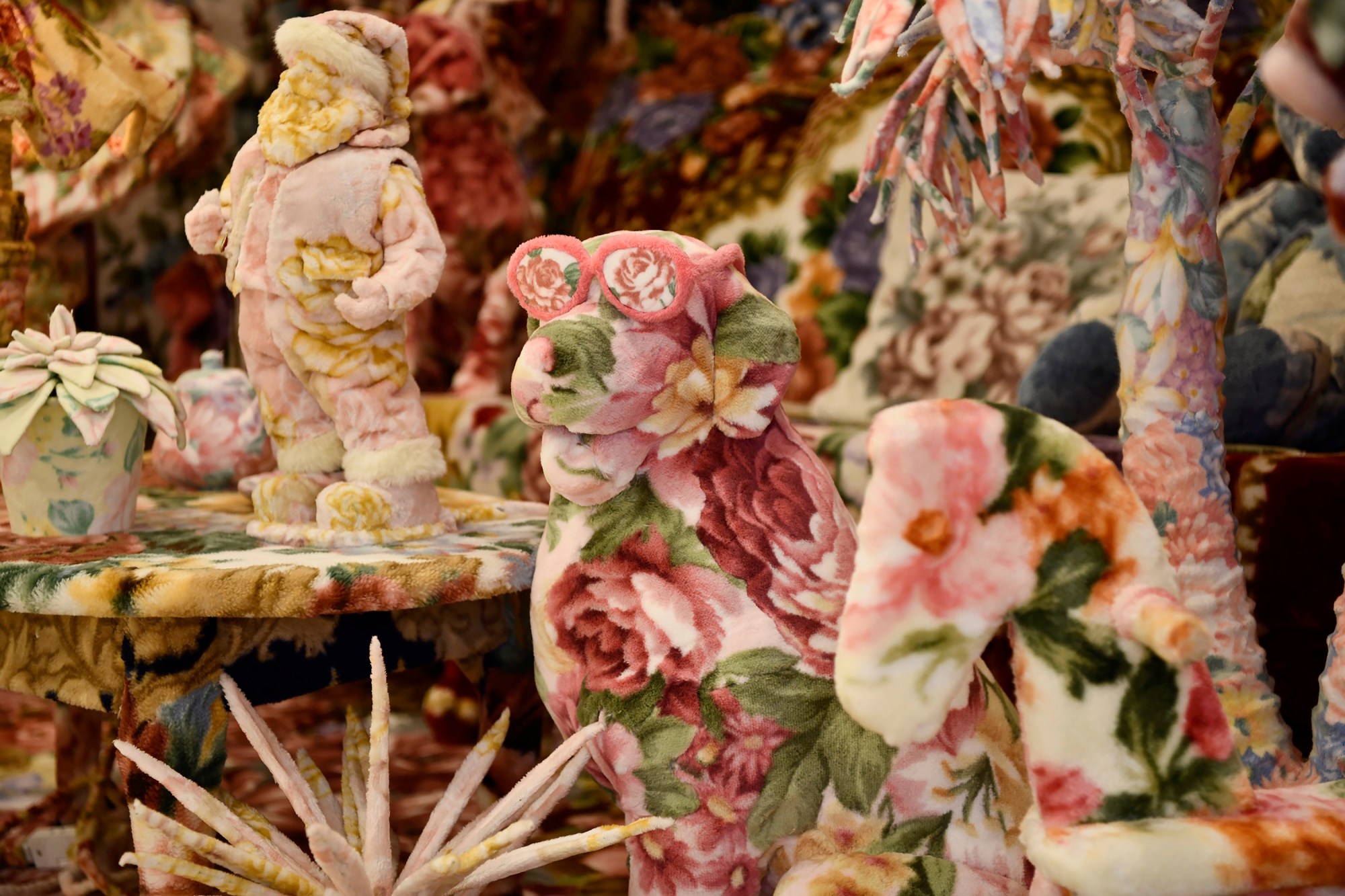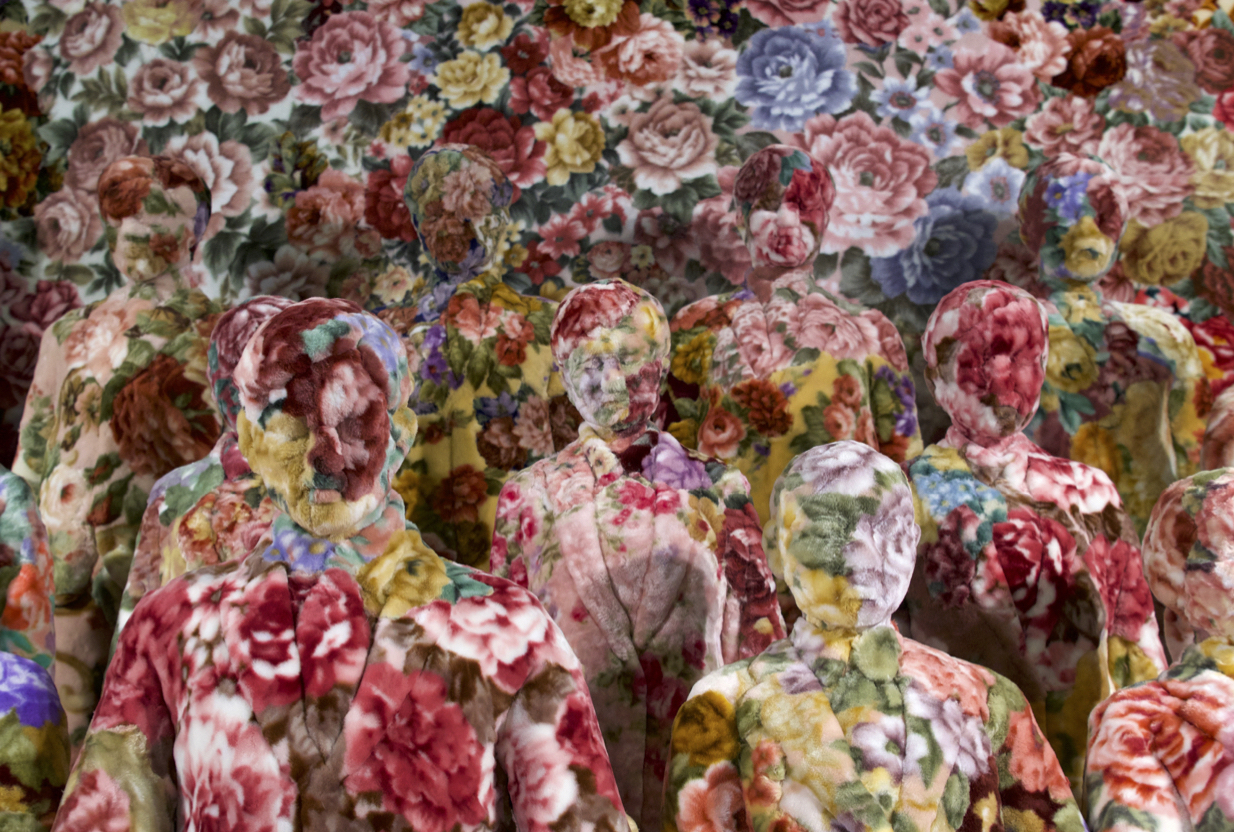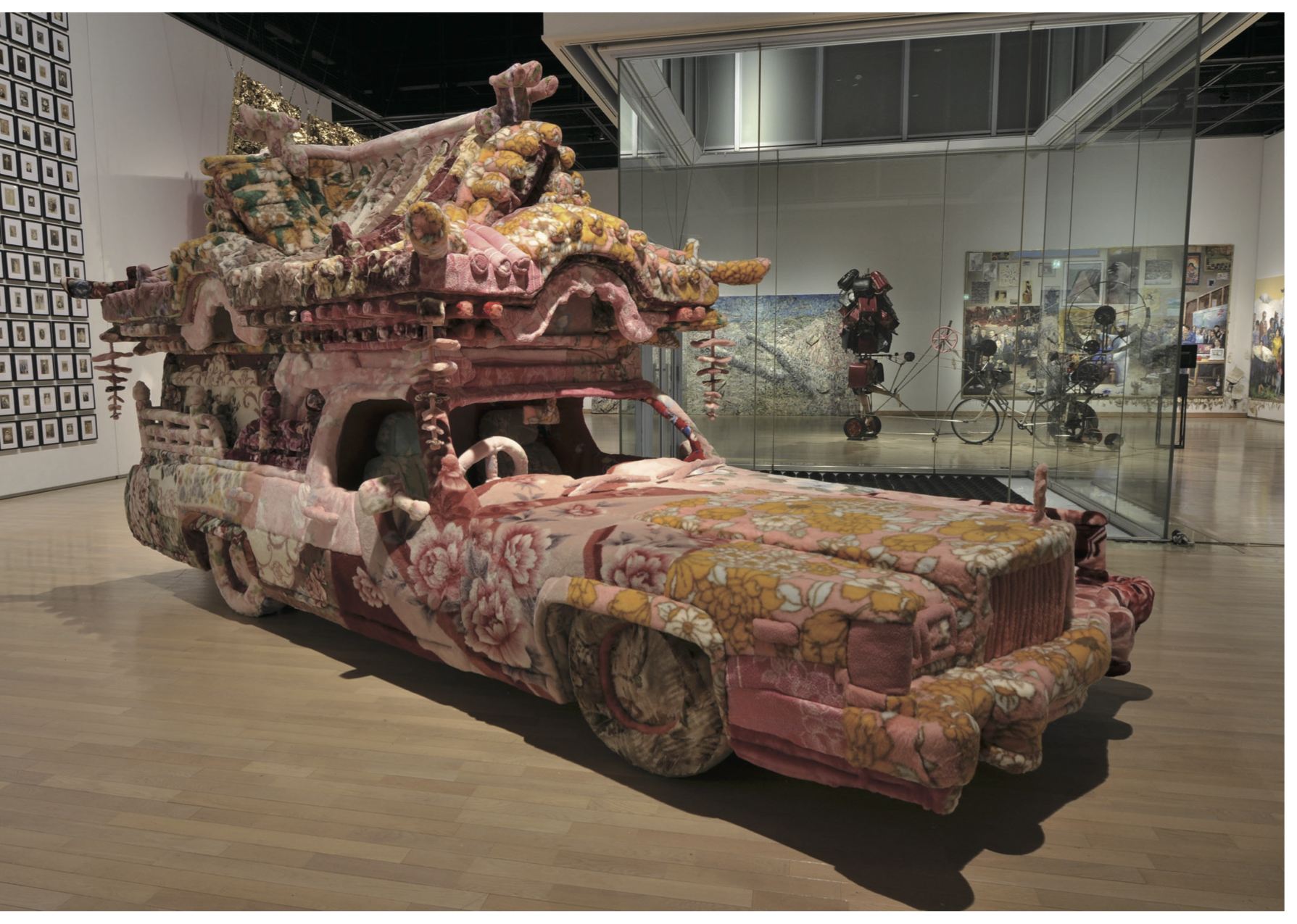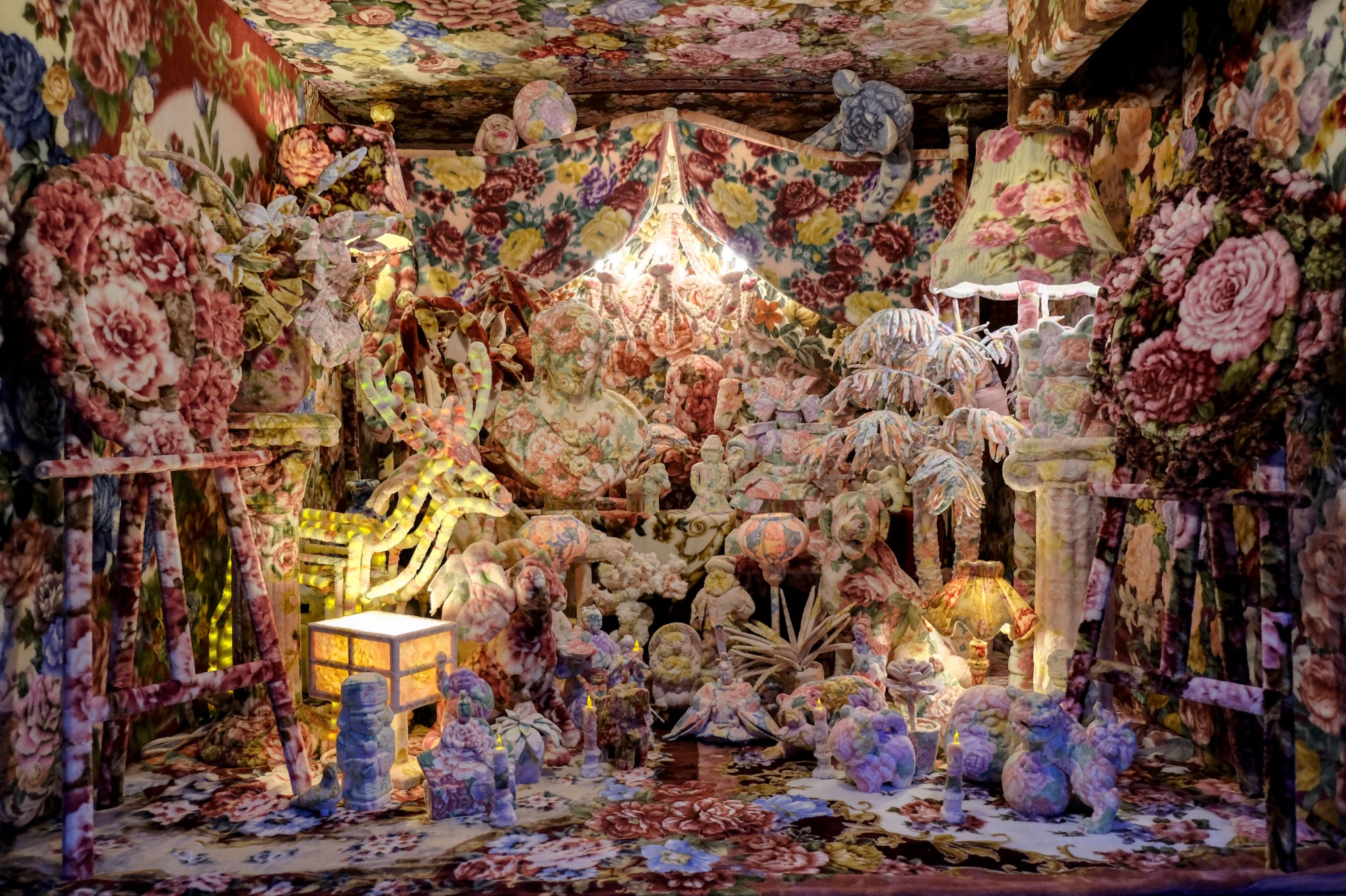Makoto Egashira’s obsession with rose blankets began when a friend laughed at his own. “When I was living on my own, a friend came over and told me, ‘The room is nice but your blanket is uncool,'” the Japanese artist says.
Since then, Egashira has been creating installations from Rococo style blankets that “every Japanese person might have.” These are often of domestic scenes, where he covers whole rooms in the plush fabric as a way to think about the shape of Japanese culture. He has featured in over 12 Japanese exhibitions in the past two years alone and is slowly growing a steady follower base of fellow blanket enthusiasts. i-D spoke to the 32-year-old Tama Art University graduate, who speaks little English, through a Japanese translator.
Reflecting on when his friend first commented on his choice of blanket for his room, Egashira realized he too didn’t particularly like the blanket. Rose blankets became popular in Japan after World War II, because of what Egashira describes as the “admiration and complex feelings they had towards Westerners.” For this reason he describes it as being “subconsciously chosen” by him, and he wanted to explore this with his work.

“Models in [Japanese] magazines and mannequins can be Caucasian and Japanese school uniforms and weddings are now in a Western style,” Egashira says. “In the front porch of houses in Japan, there can be for some reason a Rococo style fence or angel statues. Japan likes to pride itself in being Japan but there are a lot of things you could point out that are odd.” He then describes things he believes he could also be “pointed out” on. Growing up, Egashira went to a Christian kindergarten and attended church every day, but then on New Year went to the shrine to pray. His parents’ funerals, he says, were also in traditional Japanese style.
Egashira’s work experiments with this “clash of cultures” through his subconscious and experiences. As a child, he would often play with dolls, kitschy toys, and fluffy stuffed animals with his older sister. “I also used to frequently read the girls’ manga that my sister brought home,” he explains. People often mistaken him for a female artist, simply because he likes things that are “fluffy and kitsch.”

Looking at his work, it’s as though Egashira leaves a trail of rose blankets everywhere he goes. He has created a full bathroom made of the fabric, along with covering entire living rooms, windows, and installations of “blanket people.” His work would be a hoarder’s dream and a minimalist’s worst nightmare, clashing fabrics mixed with piles of blanket-covered ornaments. In his SICF 17 Grand Prix prize-winning exhibition last year, he even invited viewers to “adorn” a blanket suit when entering the installation.
When creating the rooms, he is most interested in the rooms called youshitsu, which are Western-style rooms that are part of some Japanese houses. “I think it’s interesting how Western style is mainstream in Japan now. Japan adopts foreign cultures and then adapts them to make them more suited to Japanese people,” he says. “These things can feel uncanny and uncomfortable but can also be interesting and fun.”

“Interesting” and “fun” could also describe Egashira’s playful installations. He has even created a Japanese blanket hearse, his personal favorite work so far. “The roof of the hearse is Japanese and the body is a Lincoln Continental,” he explains. “This juxtaposition is very much a part of Japanese culture.”
With a bio as simple as “I’m creating artworks using blankets,” it could be easy to assume Egashira simply became obsessed with the fabric or patterns. But, after speaking with him, it’s clear the comment from his friend, and his subsequent realization of his “subconscious” blanket choice, has led him to much deeper thoughts about the complications of admiring Western culture.
“The more I think, the more I can continue to explore the blanket,” he says. And, while it might be unclear how he can explore the blanket any further, we’ll surely find out after his next bout of rose-patterned plush madness.
Translated by Yoshino Maruyama
